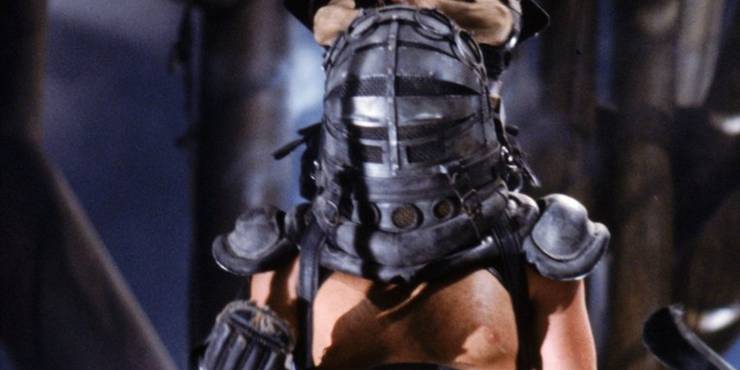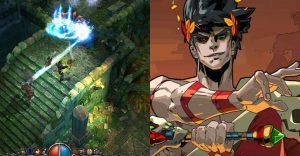Why Two Actors Played Blaster In Mad Max: Beyond Thunderdome

Two actors play the part of Blaster in 1985’s Mad Max: Beyond Thunderdome, but why did the creators need to take this unusual approach? Released in 1979, the original Mad Max was a sparse, low-budget production. Director George Miller’s propulsive crime thriller was so famously inexpensive that the reason the Mad Max is set in the future was to save on location costs.
As the series progressed, the budgets of subsequent Mad Max movies grew and the ambition of the franchise’s post-apocalyptic vision expanded with them. By the second movie, 1981’s The Road Warrior, the title character was facing down outlandishly-attired Marauders where the original pitted him against a group of grubby, lawless bikers. By the third movie, Beyond Thunderdome, the budget swelled to provide an entire post-apocalyptic city setting in the form of Bartertown.
Ruled over by both Tina Turner’s Aunty Entity and the two-man team Master Blaster, Bartertown was a city of split allegiances. On one side was Aunty Entity, a Furiosa blueprint whose tough-but-fair approach occasionally teetered over into cruelty, and on the other was the mysterious Master Blaster, who was comprised of a diminutive former engineer and his hulking bodyguard. During the sequel’s production, the role of villian Blaster needed both a strong, physically imposing actor to portray the character when he is masked and an actor with Down’s Syndrome for his face reveal, resulting in Mad Max: Beyond Thunderdome taking the unusual route of casting two actors as one character. Since prolific actor Angelo Rossitto also portrayed Master, that meant three actors played the two-man Master Blaster all in all.

Every Mad Max villain fits into the franchise’s mythology, but Master Blaster was unusual in being a surprisingly sympathetic portrayal of the classic “mouth and muscle” villain combination. The revelation that Blaster has Down’s Syndrome prompts Max to realize Aunt Entity is as villainous as her enemies and remains one of the franchise’s most underrated scenes. Stephen Hayes, an Australian actor who appeared in a documentary about acting with Down’s Syndrome, played Blaster’s face and received a special thanks credit for the momentary role. Paul Larsson, meanwhile, performed as Blaster’s body thanks to his 6’ 8” height and imposing build. A plumber by trade, Beyond Thunderdome is often listed as his movie debut but according to IMDb, Larsson had a small earlier role in the trippy psychological horror Altered States in 1980.
It is certainly unusual to see three actors playing one villain, and doubly odd when one considers the same actor played both Mad Max villain Toecutter and Fury Road’s Immortan Joe despite decades elapsing between movies. That said, the technique used by the filmmakers was undeniably effective, and resulted in the most memorable moment of Beyond Thunderdome’s lengthy runtime. Often called the weakest entry by critics, Mad Max: Beyond Thunderdomedoes lack the visceral thrills of The Road Warrior or Fury Road, but its thoughtful portrait of power and who society allows to wield it remains interesting – if imperfect – and couldn’t have been achieved without the creators taking an innovate approach to casting the sequel.
About The Author


















